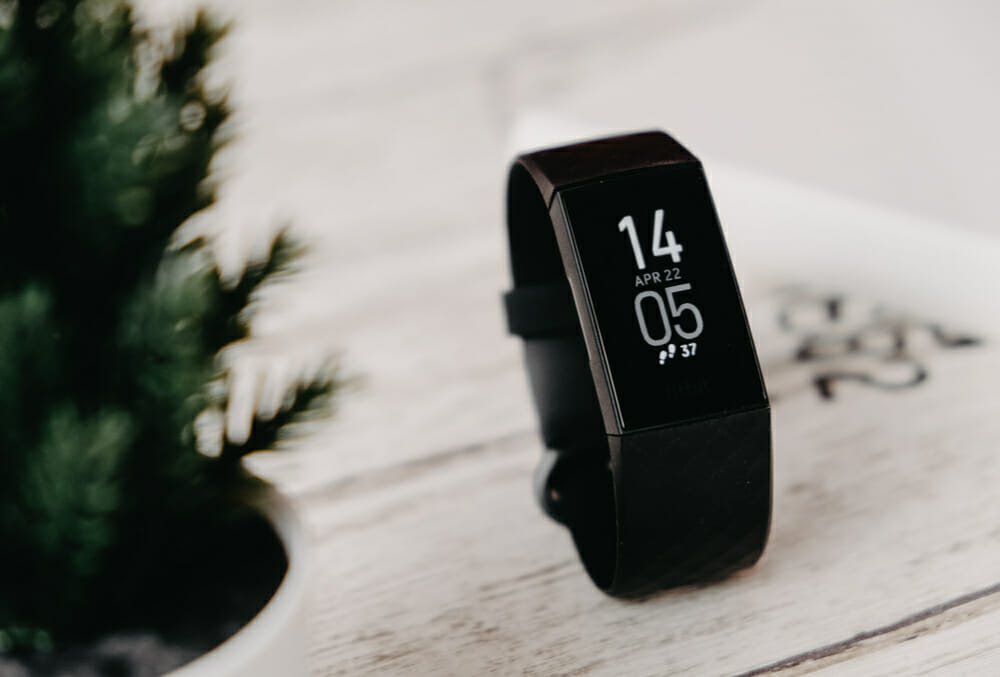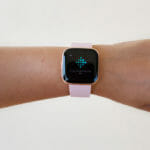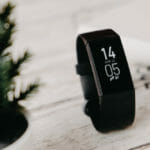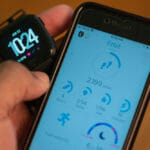Fitbit has changed the game when it comes to fitness tracking, allowing anyone to have access to biometric information that was once only available to elite athletes.
But with so many symbols to keep track of, it can seem impossible to know just what they mean.
Use this handy guide to decipher just what your Fitbit is trying to tell you.

Fitbit Symbols
Feet Symbol
The symbol with the two footprints gives a reliable estimation of the number of steps you have walked for older Fitbit devices, newer devices display a single flexed foot from a side profile.
During a fairly active day, this figure should be between 5,000 and 7,500. More active people will have a daily steps estimation of 7,501 to 9,999. An active day would mean around 10,000 steps, while a highly active individual could rack up a daily step total of 12,500.
Flame Symbol
The symbol that looks like a mini bonfire or candle flame gives you an estimation of the calories you have burnt. This value is the combined total and does not separate active and inactive calorie burning.
This is estimated from your basal metabolic rate, which is the number of calories needed for you to do normal bodily functions and homeostasis, and your activity data. If your device monitors heart rate, this information will be used to give a more accurate estimate of calories burnt during exercise.
Heart Symbol
Your heart rate or beats per minute (BPM) is displayed with the symbol of a heart. Sometimes this heart has an ECG strip running through that looks like a stretched-out Z on its side.
You can find this function by tapping or swiping the screen of your Fitbit, depending on the model. This value is estimated by firing green flashing LED light into your skin. Photodiodes then detect the volume changes in your capillaries above your wrist and these volume changes give an estimated BPM.
Lightning Symbol
Look for this symbol to get an idea of your activity level for the day. This will be displayed as minutes.
To make sure this is accurate, you need to make sure you are wearing your watch correctly. If you need to swap the wrist you wear your watch on for any reason, make sure to update the settings to reflect this. You also need to enter accurate personal information when you set up your Fitbit.
Man Running
Very active minutes are displayed under this symbol that looks like a man doing a sprint. High energy activities, such as running. A very active minute is classified by the number of steps per minute which may mean that some strenuous activities, such as weight lifting or swimming, are erroneously not counted in this section.
For accuracy remember to manually enter all activities you complete.
Man Standing
If a symbol of a man doing what looks like a yoga move appears, this is your reminder to get moving. By alerting you that you have been sedentary for a while, your Fitbit watch is aiming for you to walk 250 steps each hour so you develop healthy habits.
You can of course turn this off if it is not appropriate for your uses on the Fitbit App.
Man Swinging His Arms
Linking to the movement reminders is the hourly movement information, shown by a man swinging his arms above his head.
Your hourly movement goal is to hit 250 steps every hour from 9 am to 6 pm every day. If you do not hit one of your hourly movement goals, you have the option to make it up in the next hour. Like the movement reminders, you can turn this feature off if it is inappropriate.
Map Pin
Fitbit uses GPS data and information about your steps walked to give an estimation of the distance you have traveled during the day. This is shown by a map locator icon that looks like an inverted raindrop, with the tail at the bottom and bulbous end at the top.
Crescent Moon Symbol
There are two versions of this symbol, depending on the age of your Fitbit device. Newer devices display hours slept with a crescent moon and a Z to suggest snoring, while older models just have the moon.
Fitbit uses a combination of heart rate monitoring and motion-detecting to track sleep, as both of these values fall and are noticeably different than if you are awake. You do not need to log that you are sleeping but will be able to see a detailed rundown of your night on the Fitbit App. Make sure you aim for eight hours a night for peak health.
Stairs Symbol
This gives an estimate of the number of floors you have climbed or if you are walking uphill, the number of stairs that are equivalent to your ascent. There are several variations of this symbol that depend on the age of your Fitbit model.
The newest devices use a block of stairs with three steps, while the older version has a few more stairs drawn in its flight. The oldest version has an arrow pointing up the stairs, just in case you weren’t sure which way you should be going!
Fitbit calculates this data by using an altimeter sensor that detects slight elevation. One floor is the equivalent of around 10 feet (3m) high, and Fitbit corroborates this data with barometric pressure information and steps taken for an accurate reading.
Be aware that this feature will not work when used on a treadmill or a StairMaster.
Fitbit certainly provides a great level of detail so you get an accurate picture of your health. But not everyone wants all this information so how do you change your Fitbit so it only shows you what you want?
Simply open Accounts under the Fitbit App dashboard and select the device you would like to customize. Tap Customise Display and check the boxes for the statistics you would like to be shown. You can also change their order on your watch face by pressing the three lines on the right and sliding up or down.
Frequently Ask Questions About Fitbit Symbols
What are Fitbit symbols and icons?
Fitbit symbols and icons are small images displayed on your Fitbit tracker’s screen that represent different fitness activities and data.
What do the different symbols on my Fitbit tracker mean?
The symbols on your Fitbit tracker indicate various fitness data such as heart rate, calorie burn, exercise types, and active time, among others.
What does the flame symbol on my Fitbit mean?
The flame symbol on your Fitbit tracker means you are in the fat burn zone, which is a low-to-medium intensity exercise zone that helps burn fat efficiently.
How can I see all the symbols on my Fitbit?
To see all the symbols on your Fitbit tracker, press the button on the side of the device until you reach the Today screen. Then, swipe up to reveal the menu of fitness activities and data.
Can the symbols on different Fitbit models vary?
Yes, the symbols may vary slightly depending on the model and series of your Fitbit tracker.
What does the chevron symbol on my Fitbit mean?
The chevron symbol on your Fitbit tracker means you have reached your daily activity goal.
How can I know how many calories I’ve burned using my Fitbit tracker?
Your Fitbit tracker displays the number of calories burned throughout the day on the device’s screen. You can also view the hourly activity data and see the previous day’s stats on the Fitbit app.
What do the circular icons on my Fitbit mean?
The circular icons on your Fitbit tracker represent different fitness goals, such as steps taken, active zone minutes, and exercise type.
What does it mean when my Fitbit shows a symbol with my heart on it?
The symbol shows your current heart rate data when you are in the exercise app or viewing your fitness data on the Fitbit app.
What are some common Fitbit icons and what do they mean?
The most common Fitbit icons include the flame symbol, the chevron symbol, the heart rate symbol, and the symbols that represent different fitness activities, such as walking, running, biking, and swimming.
- How to Clean a Leather Watch Band: Quick & Easy Tips for a Fresh Look! - July 7, 2025
- How to Connect Bose Speaker to iPhone: Exciting and Easy Steps! - July 6, 2025
- Best Cheap Bluetooth Headphones - July 6, 2025






